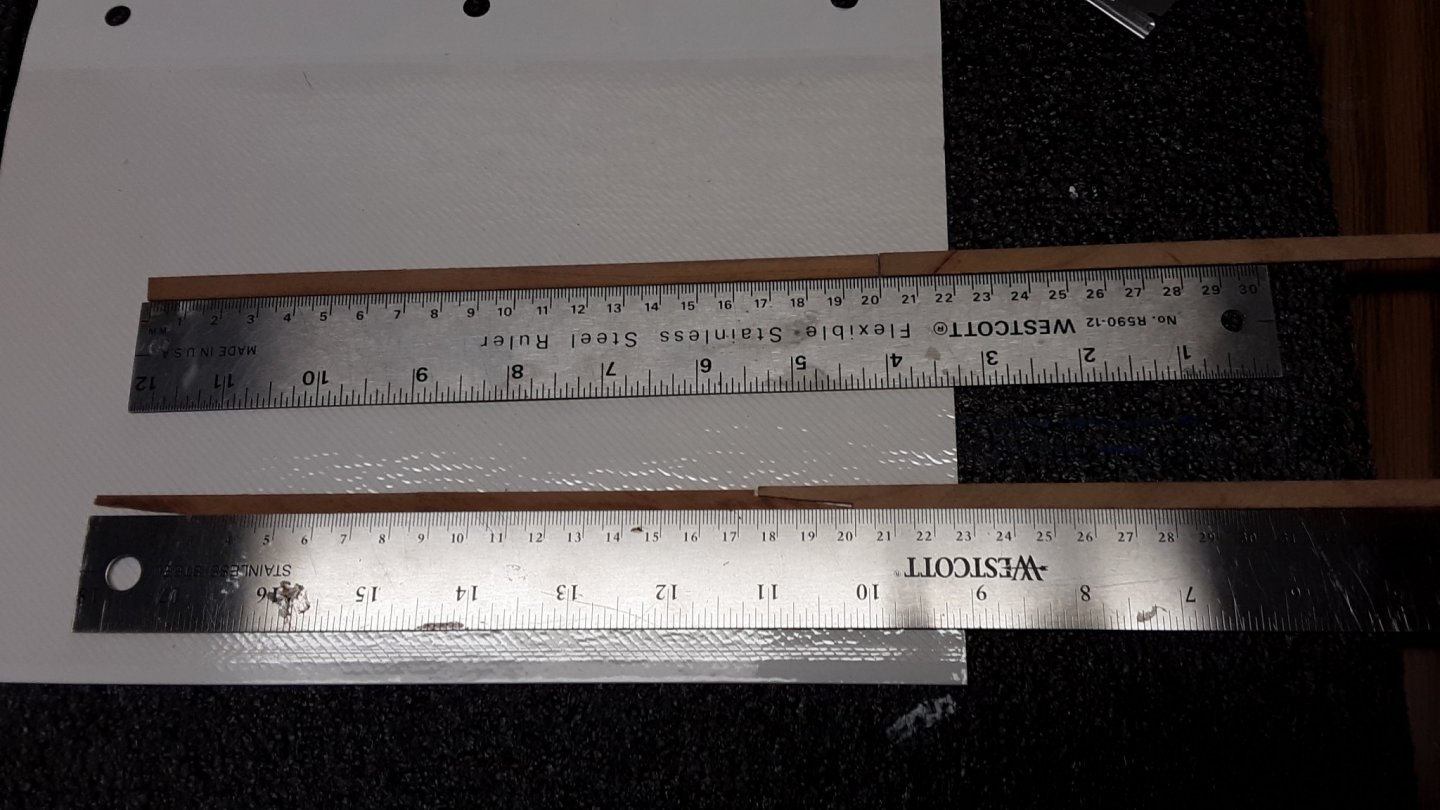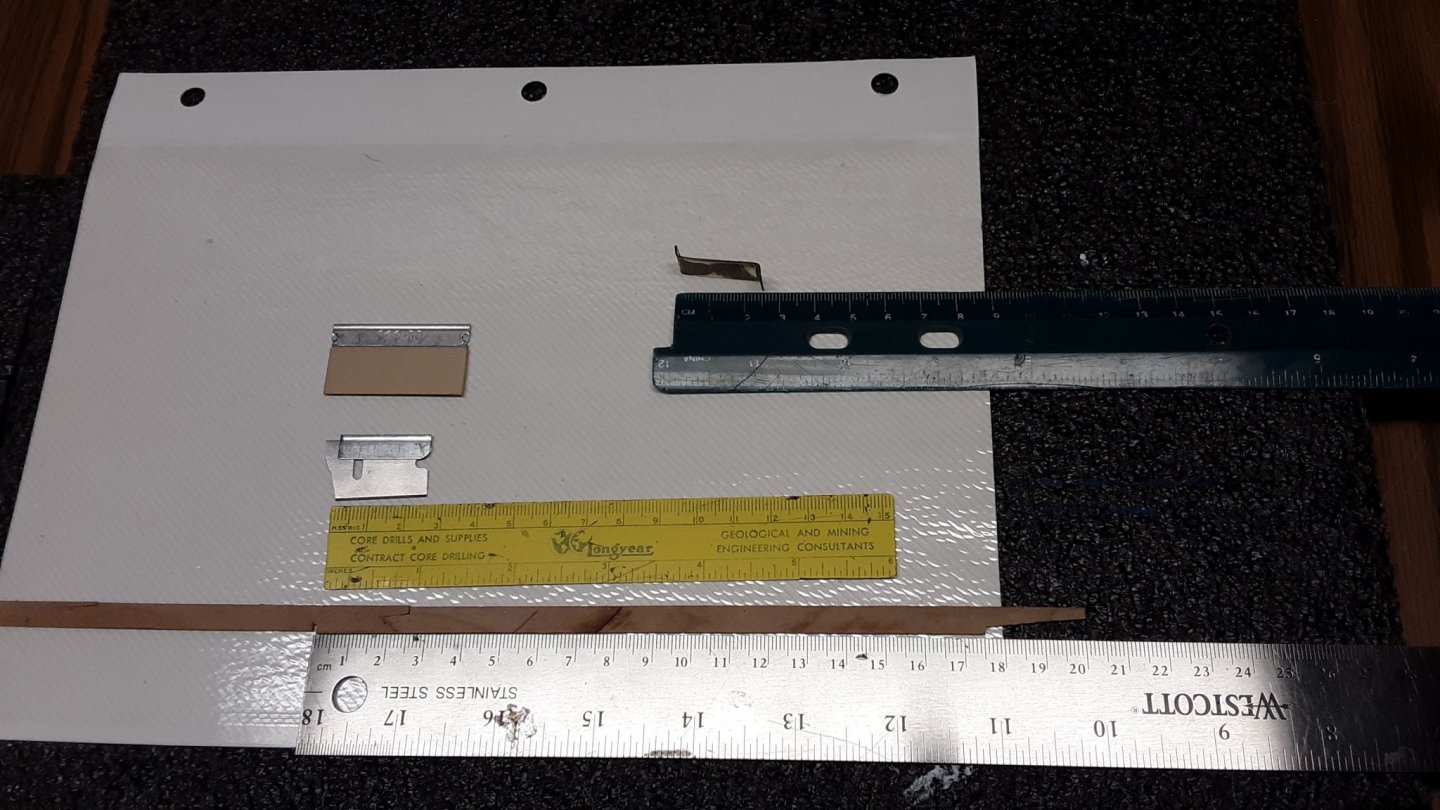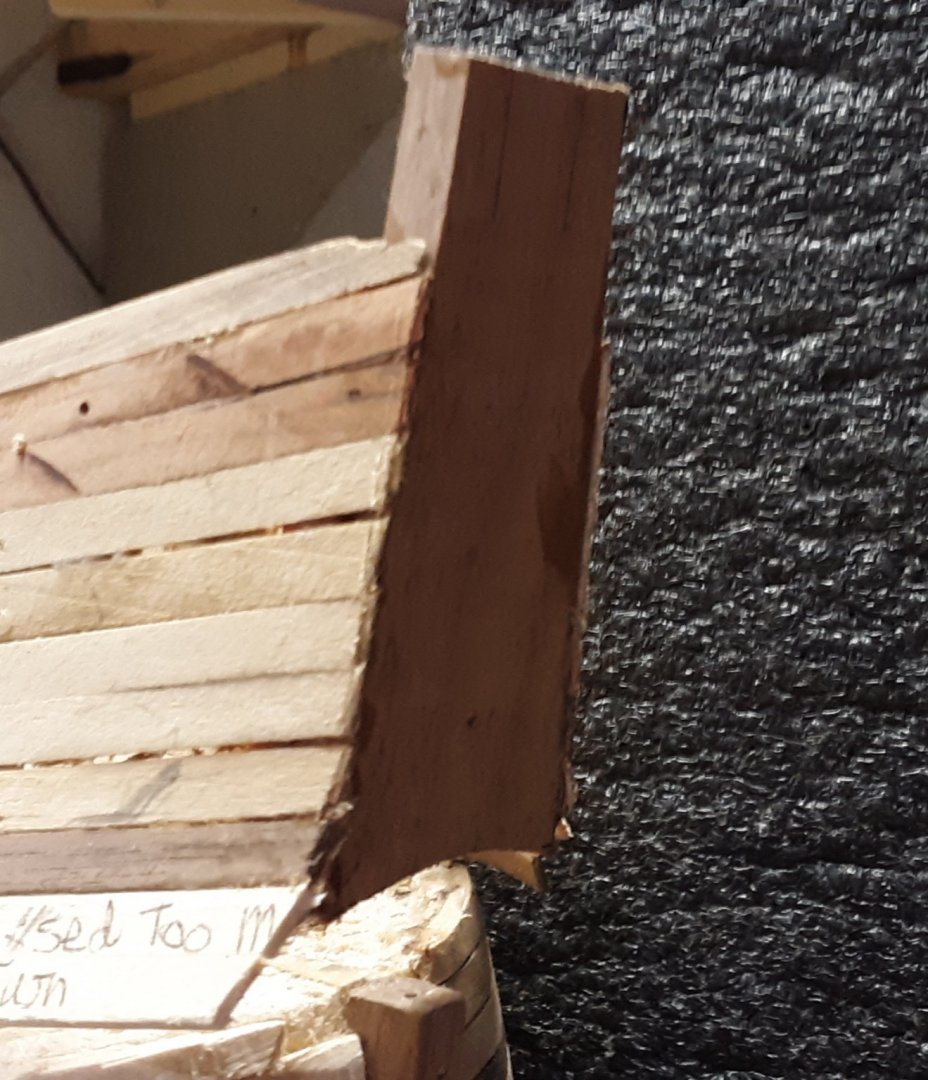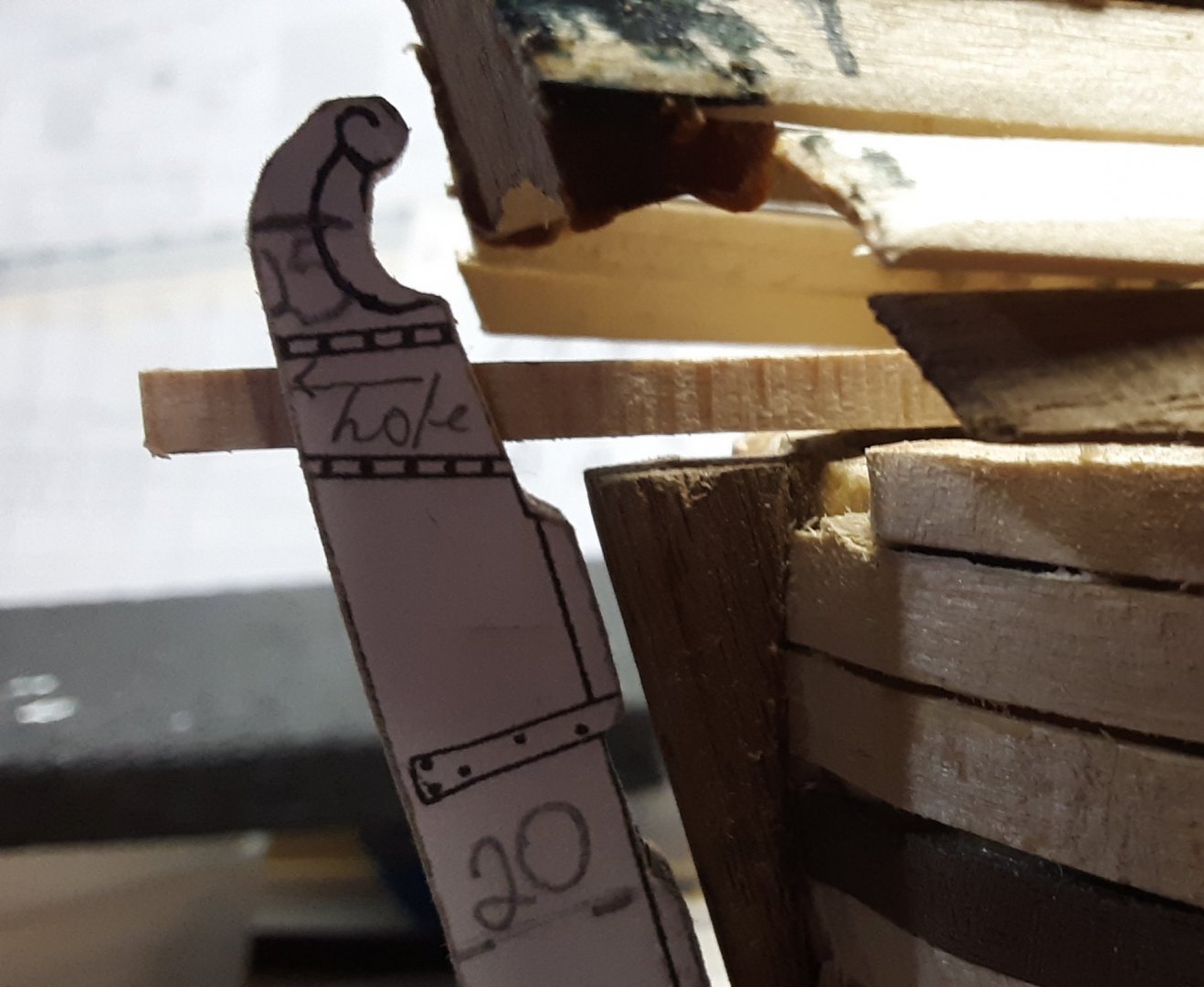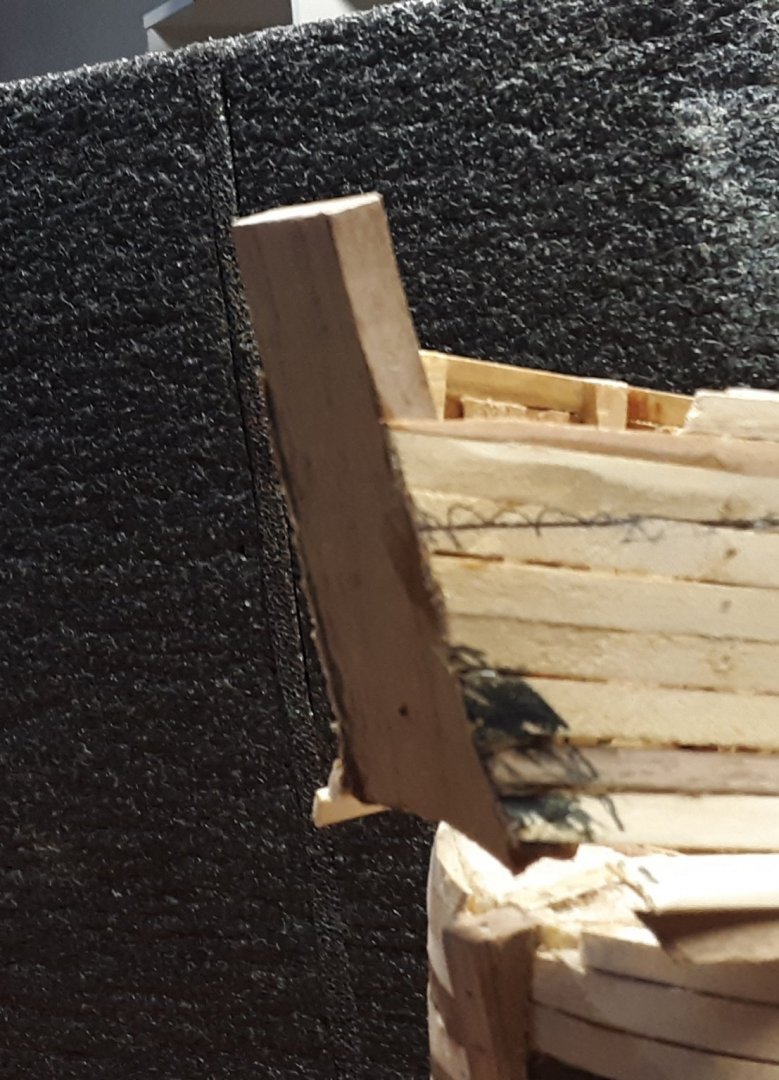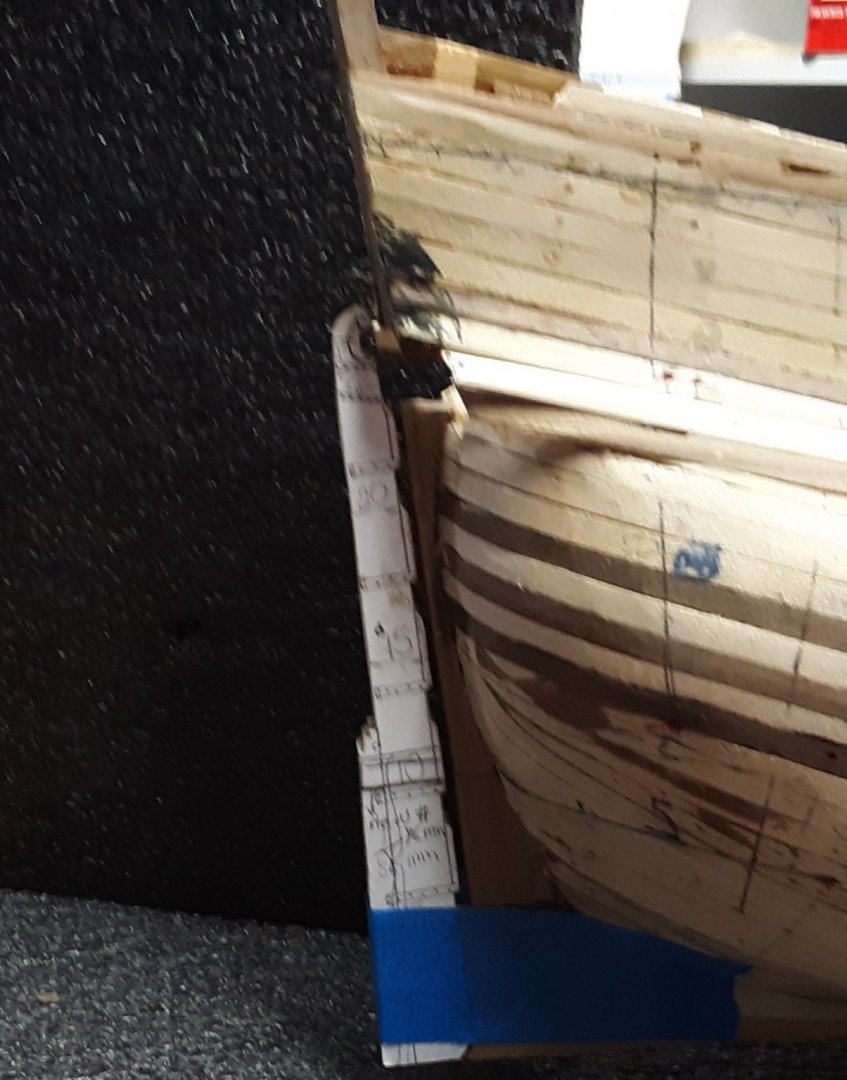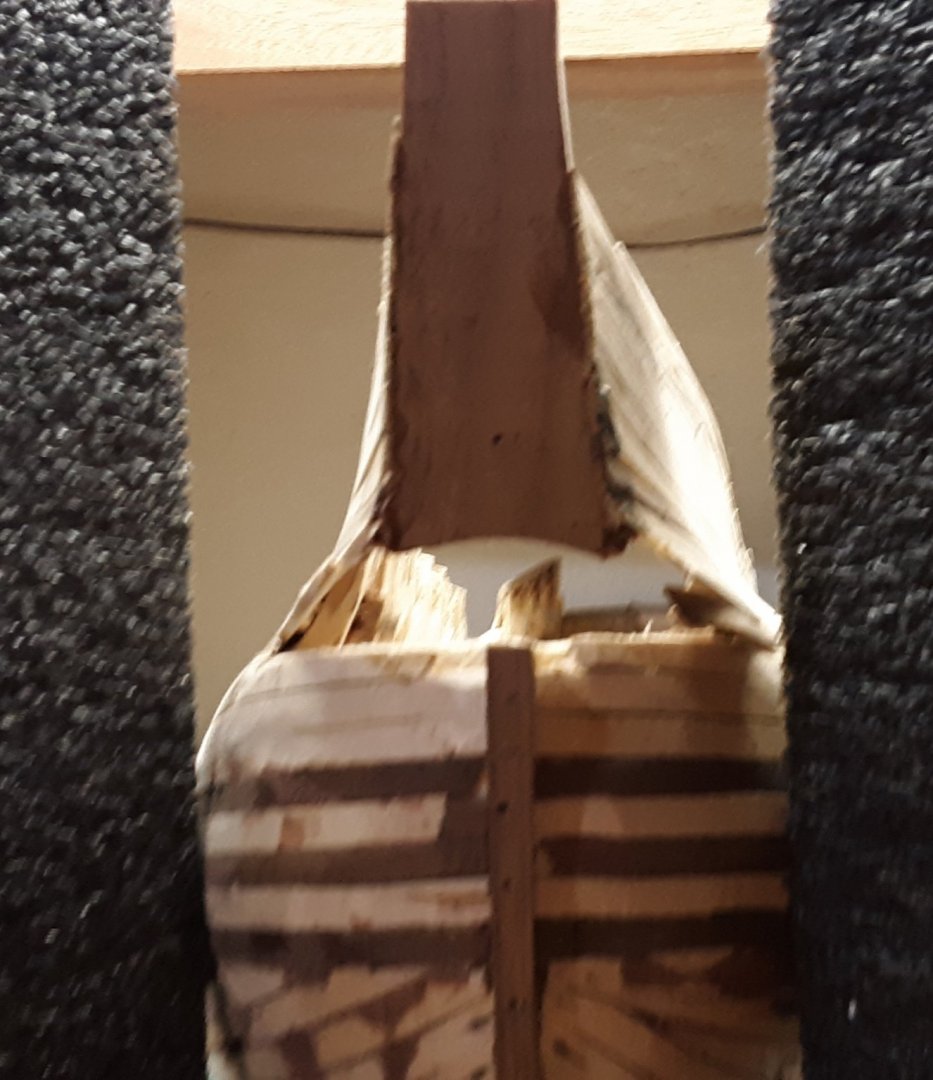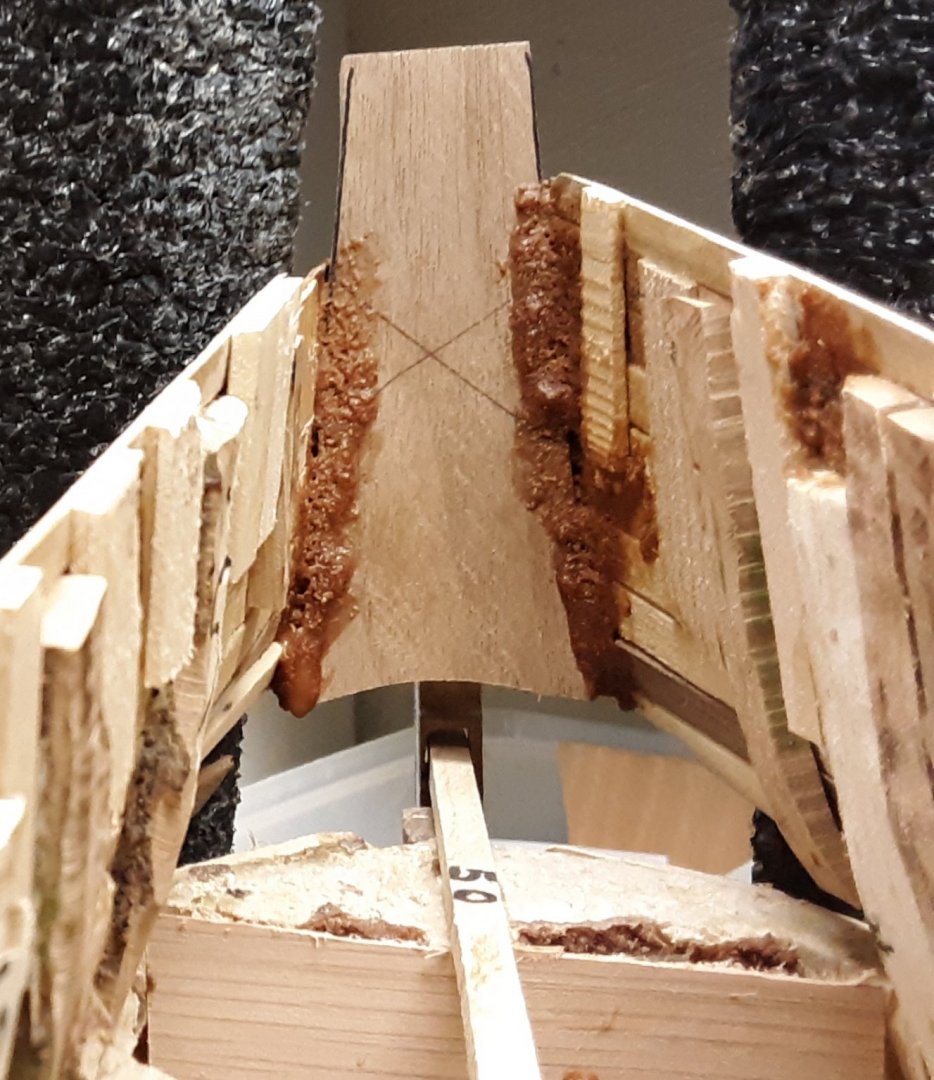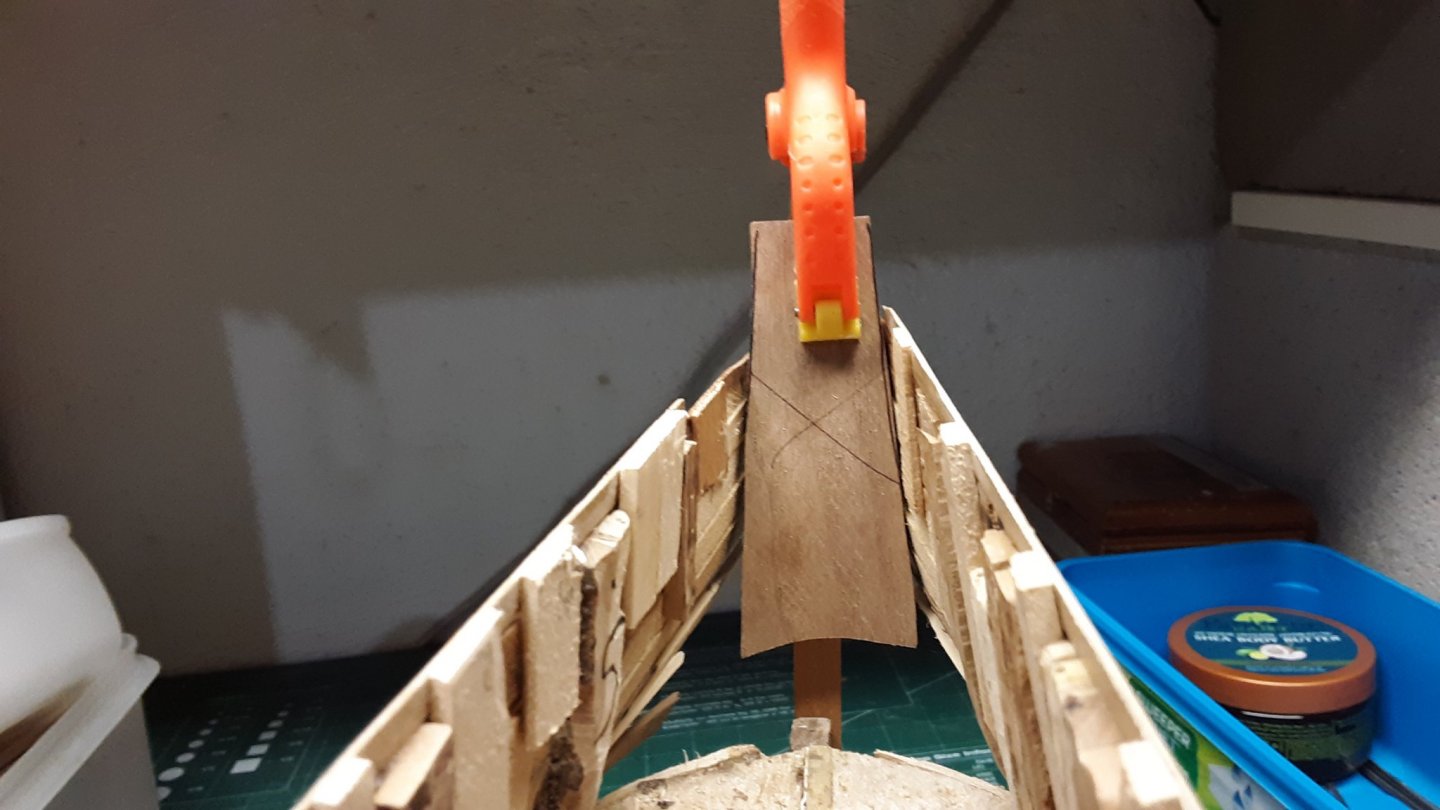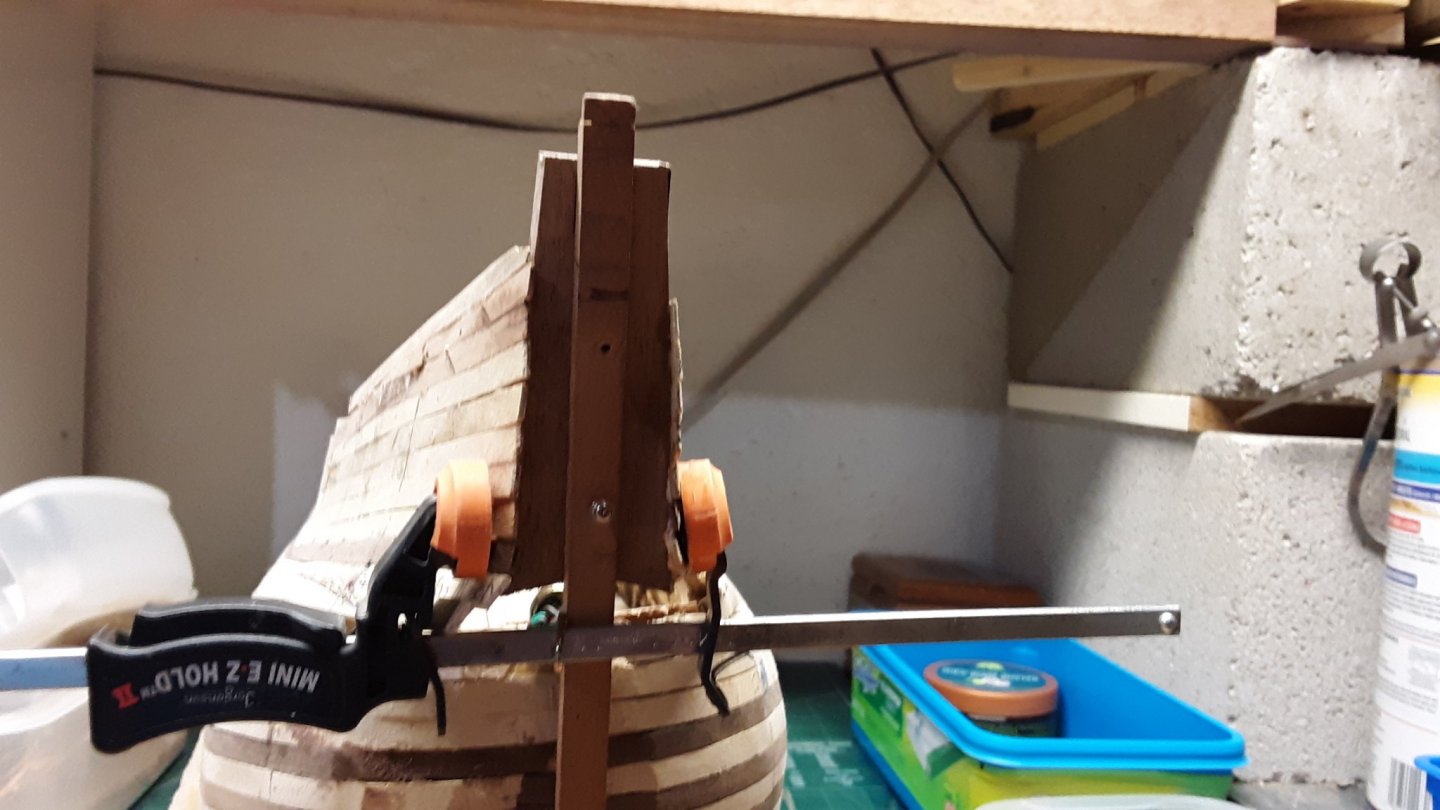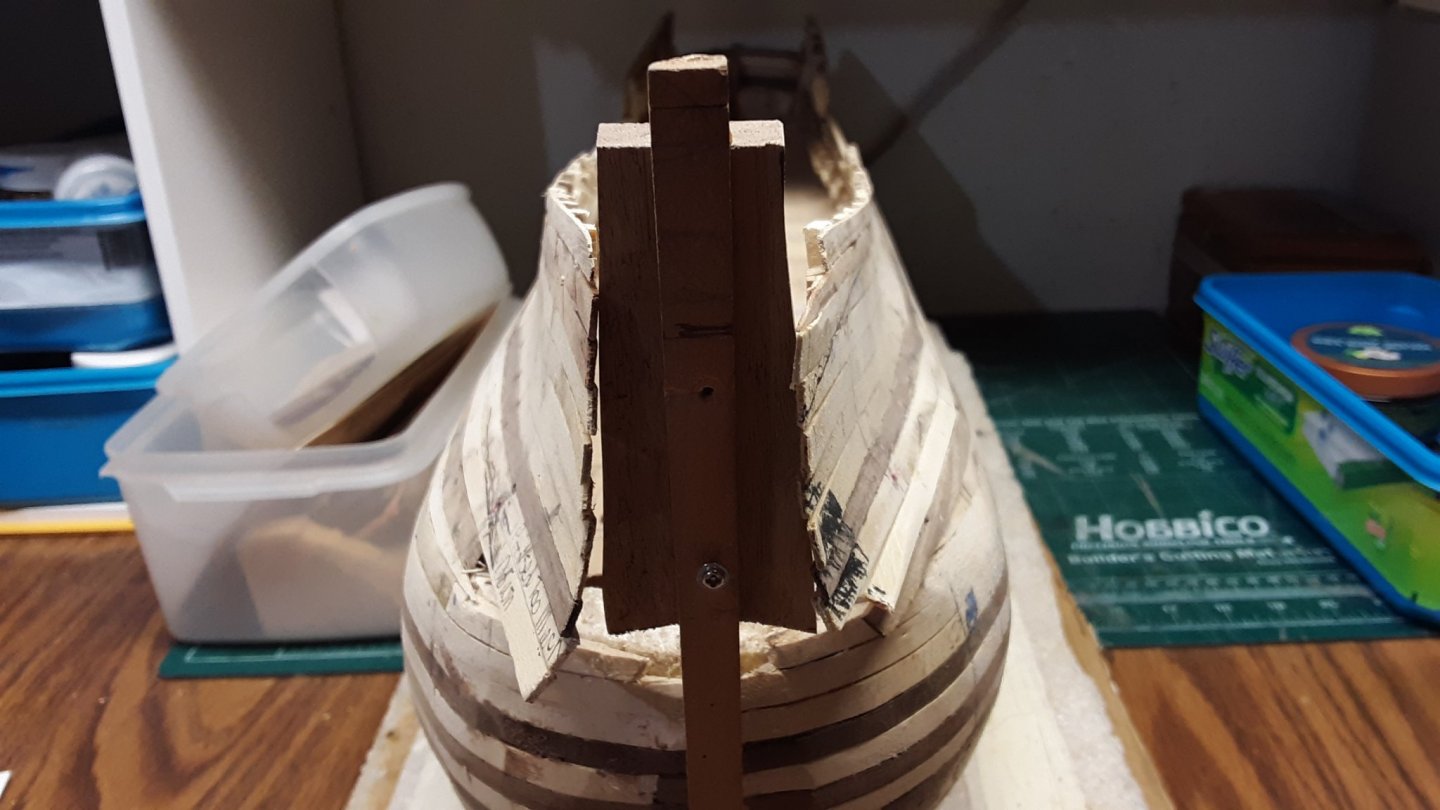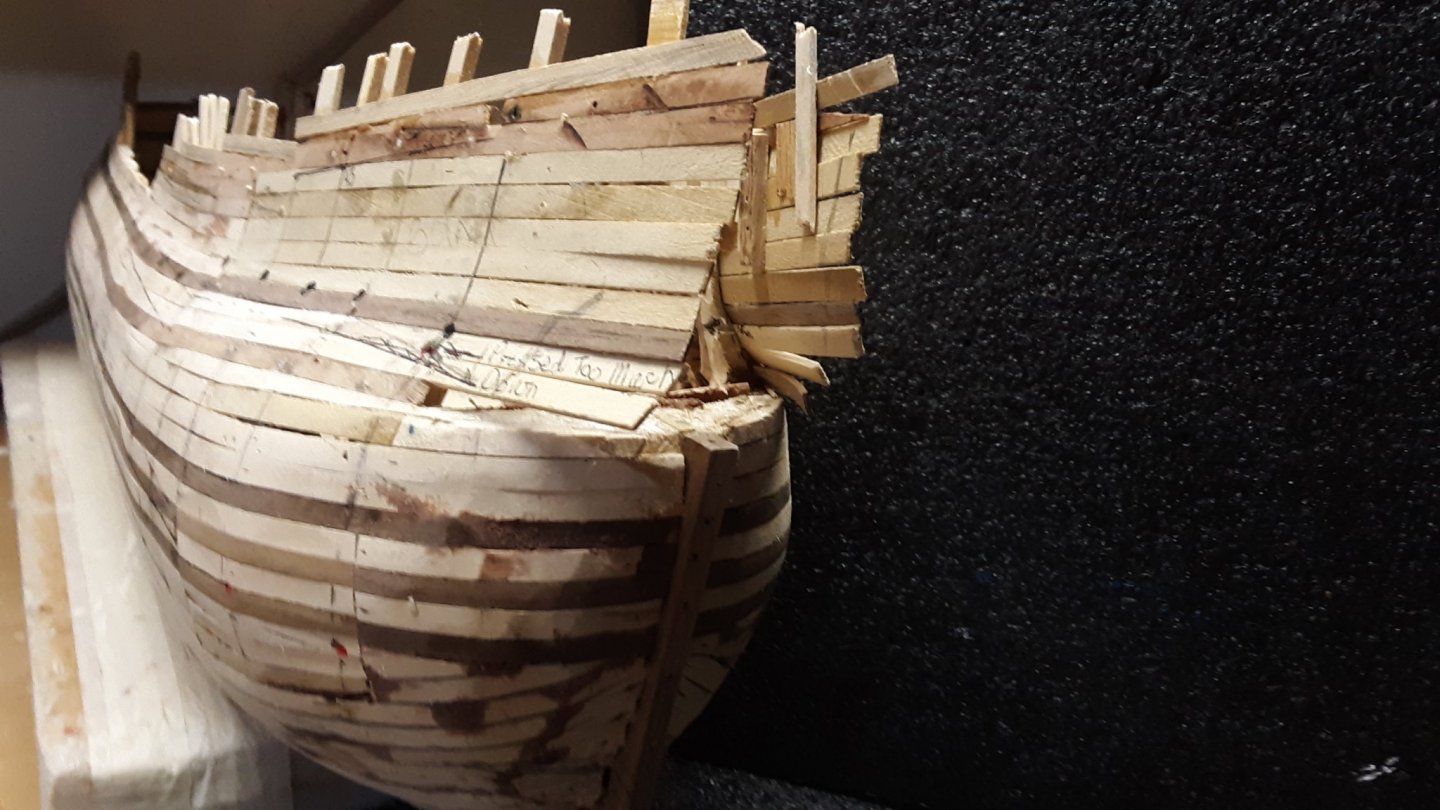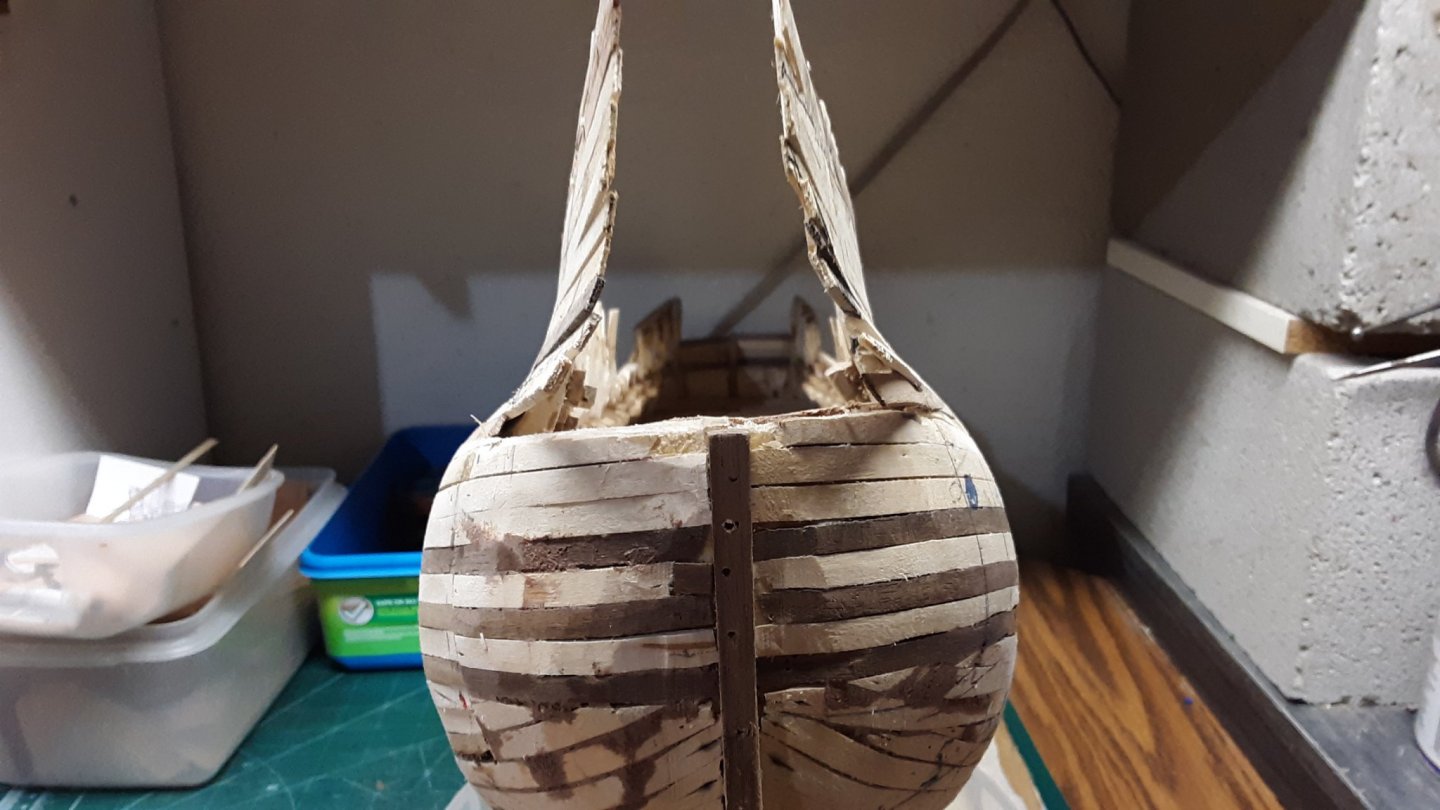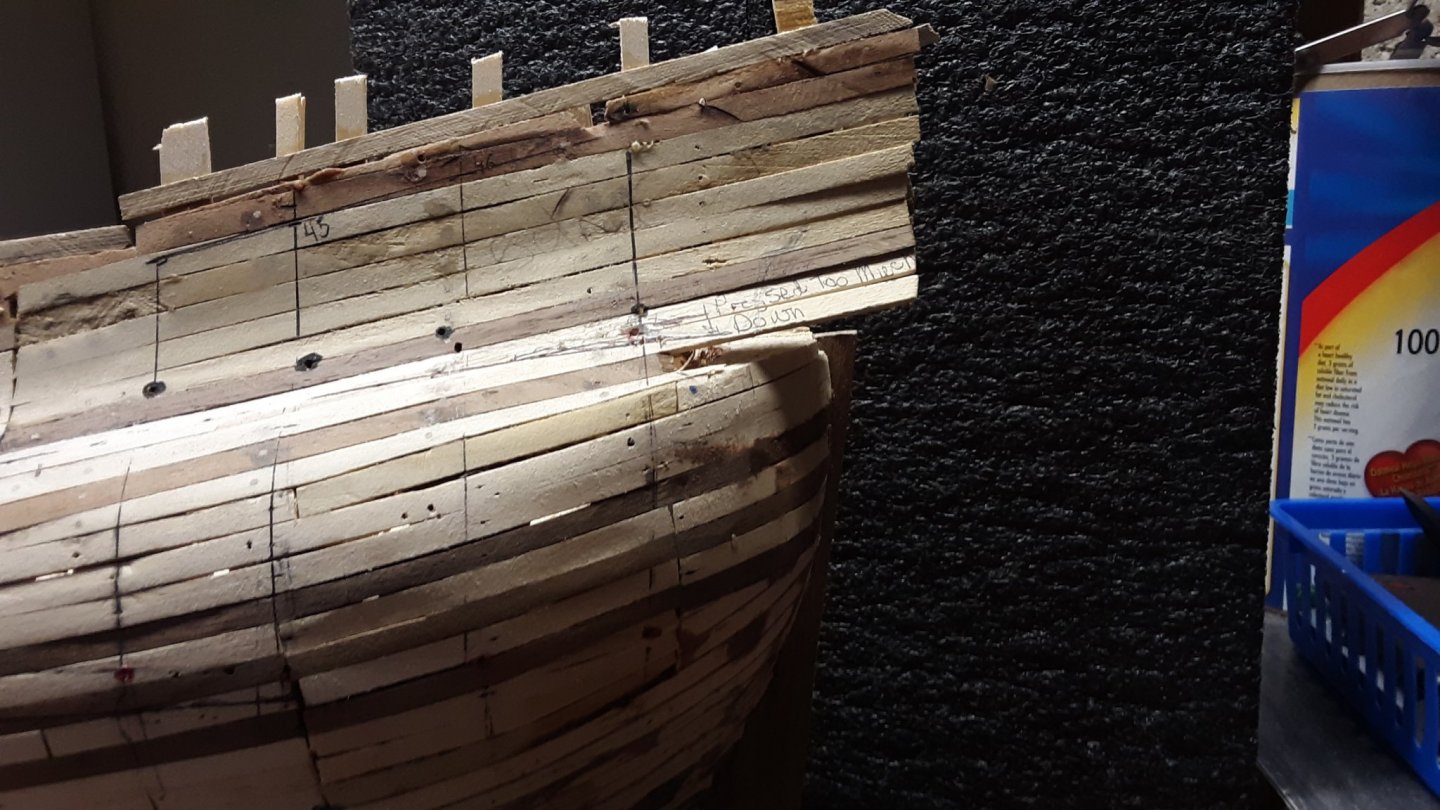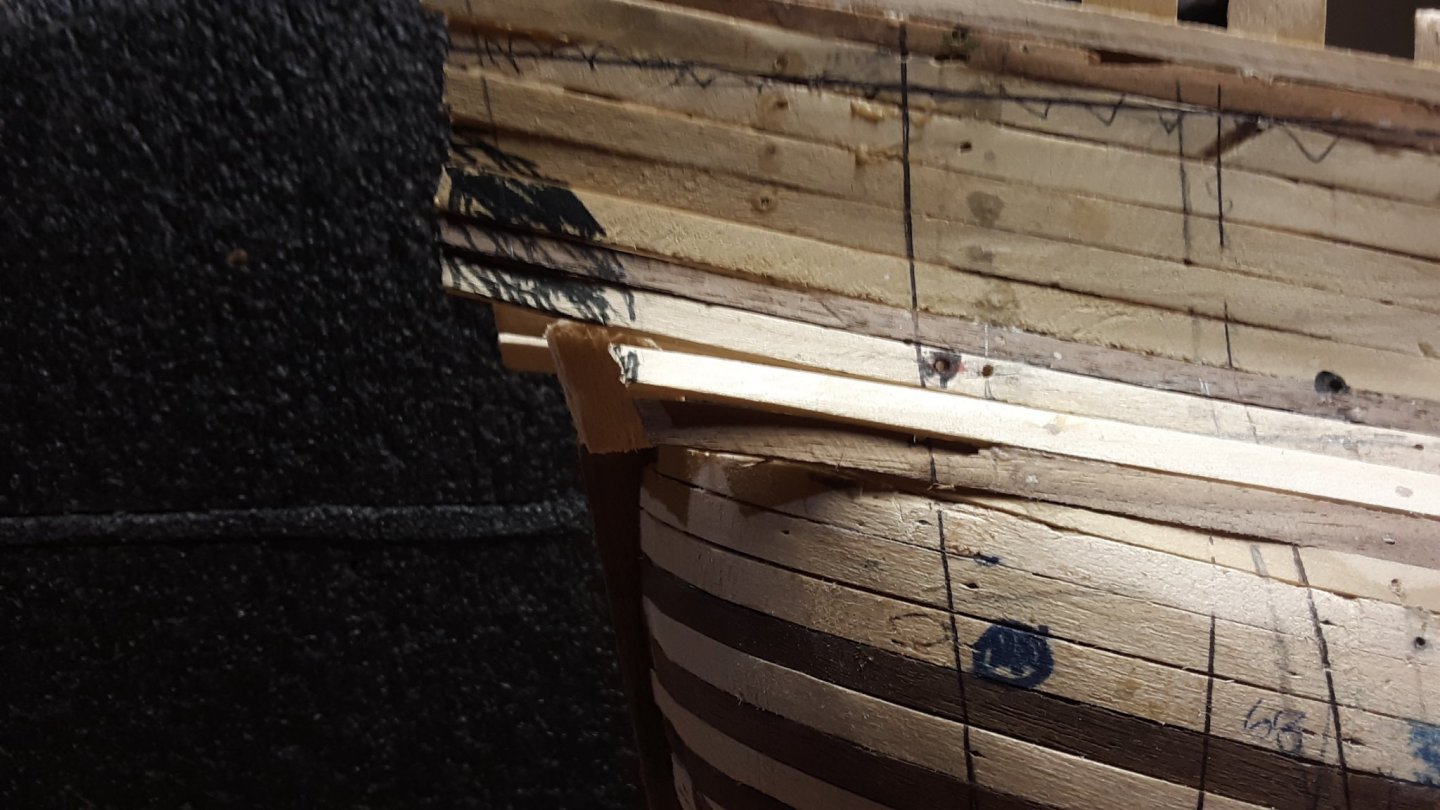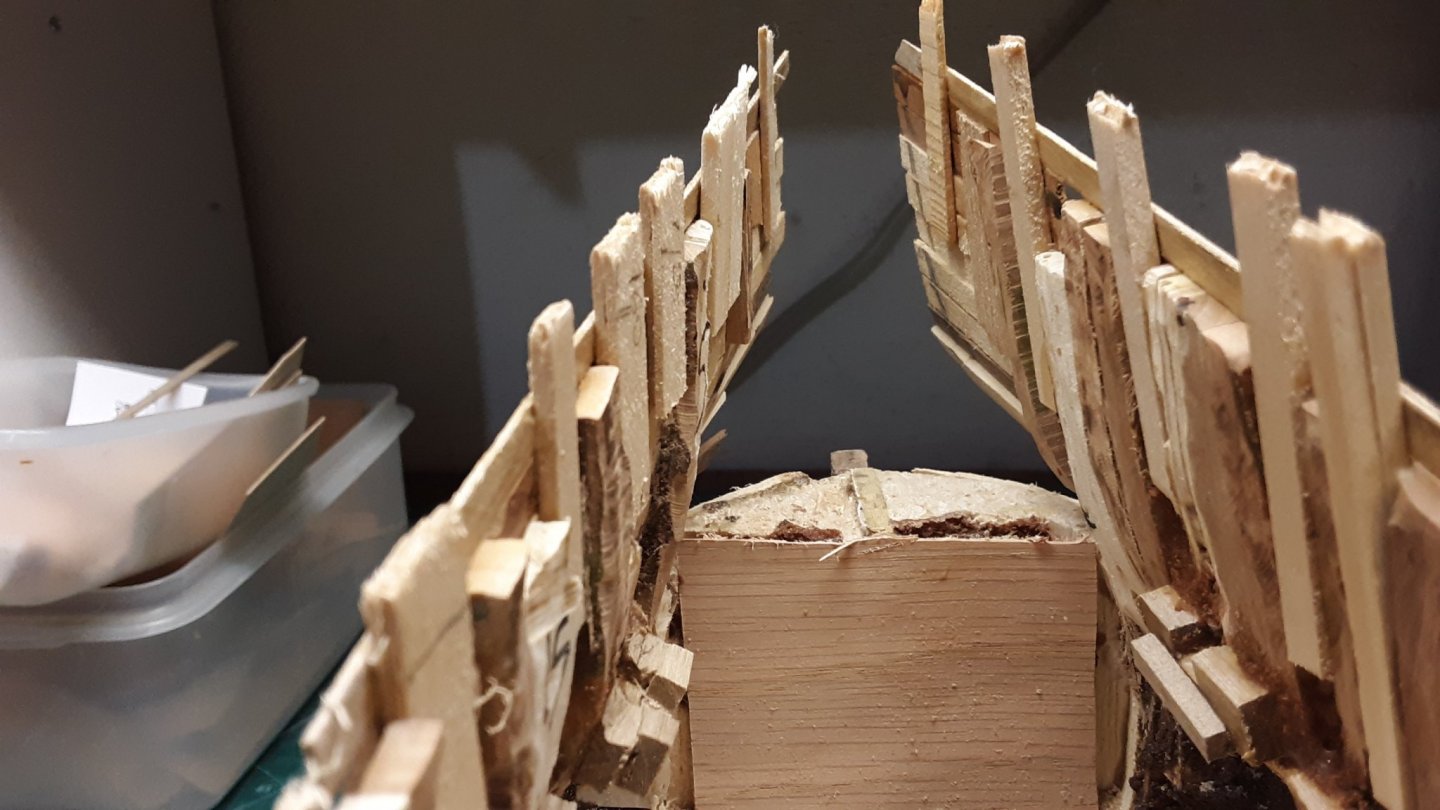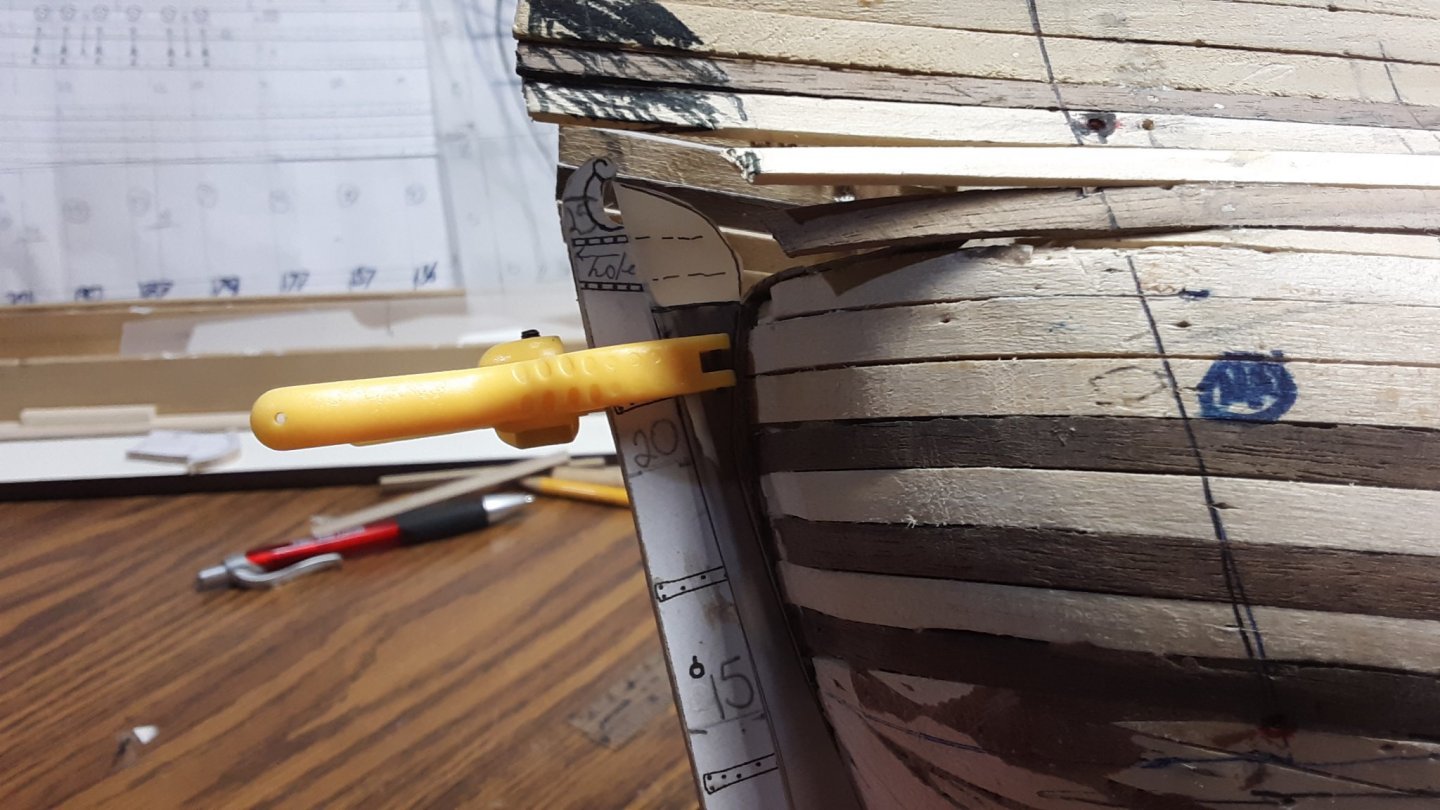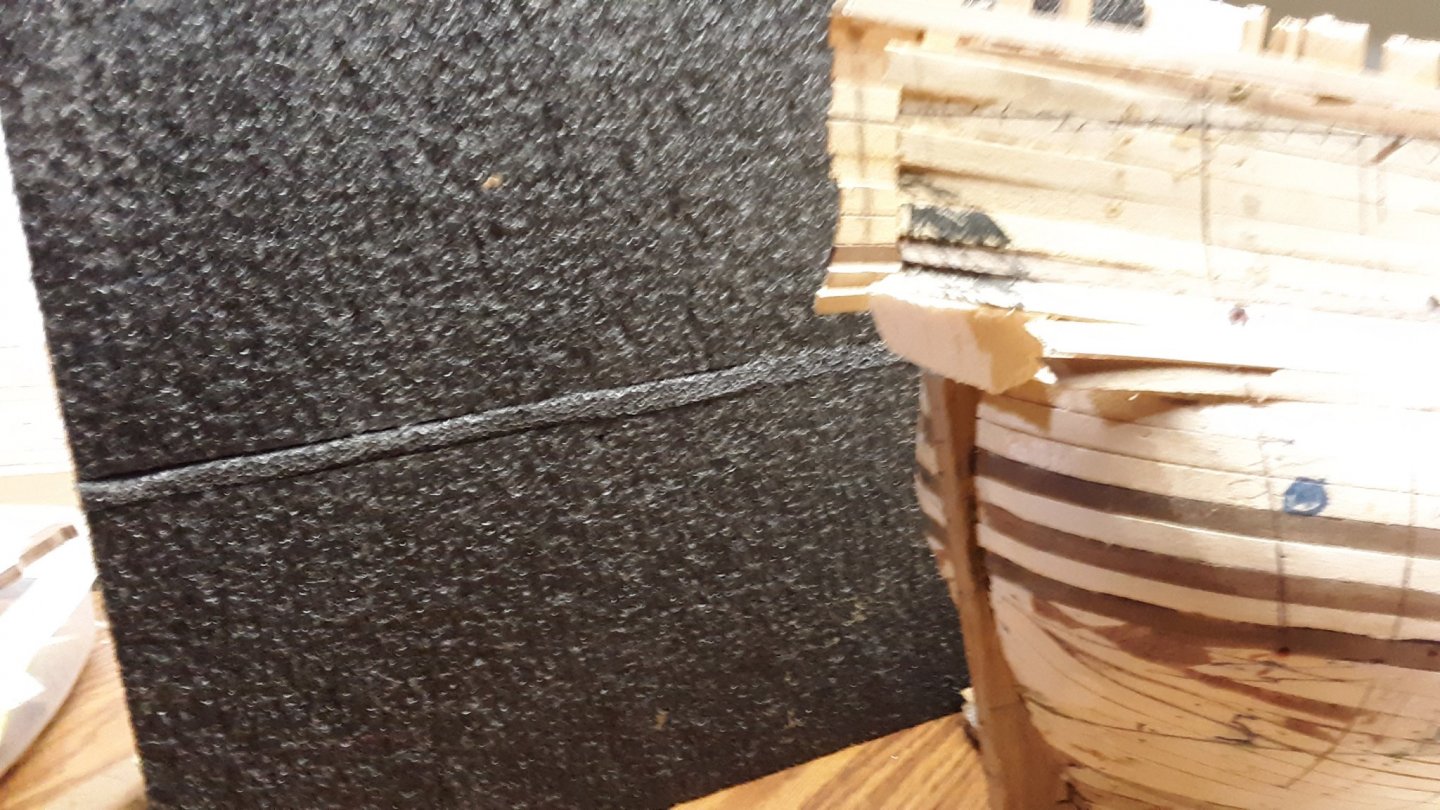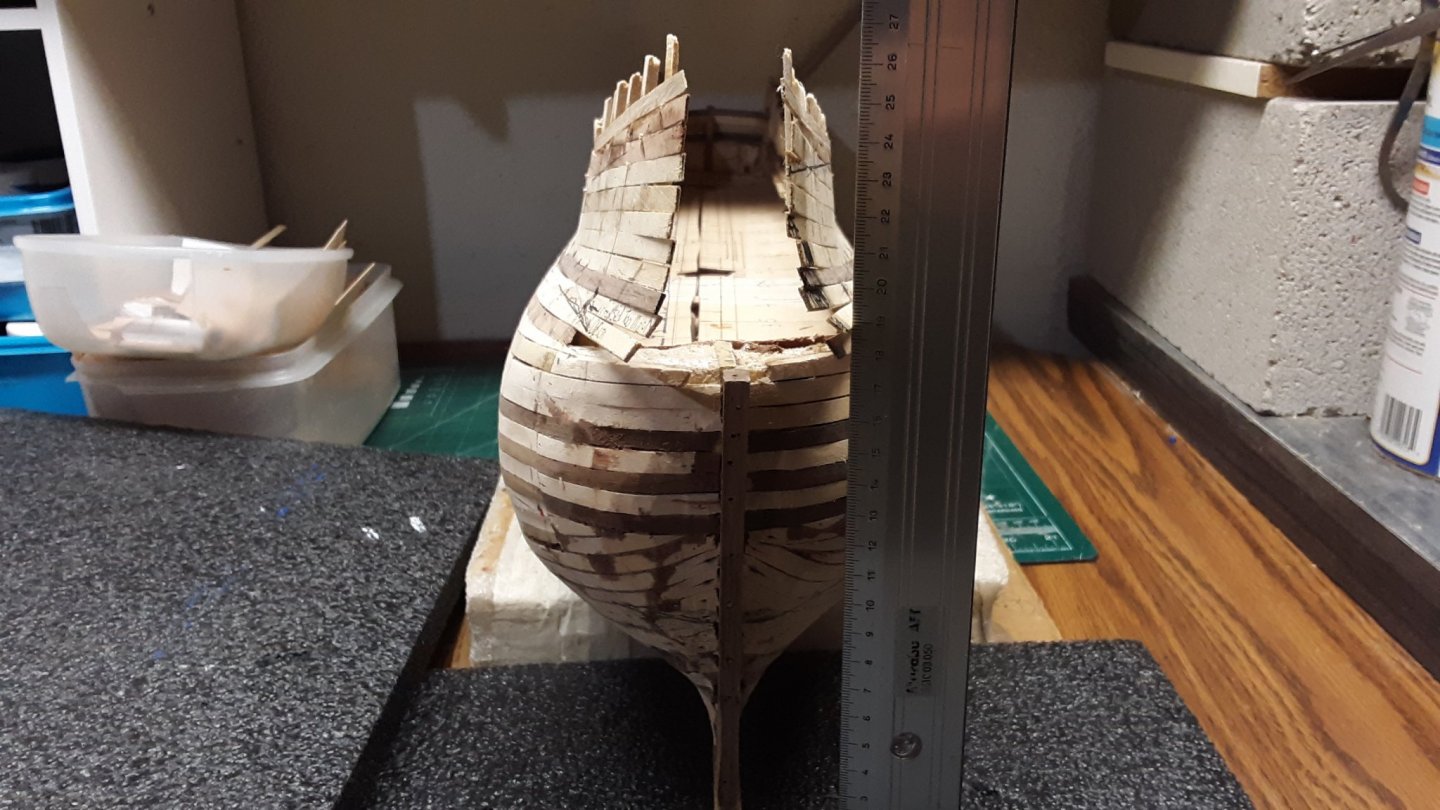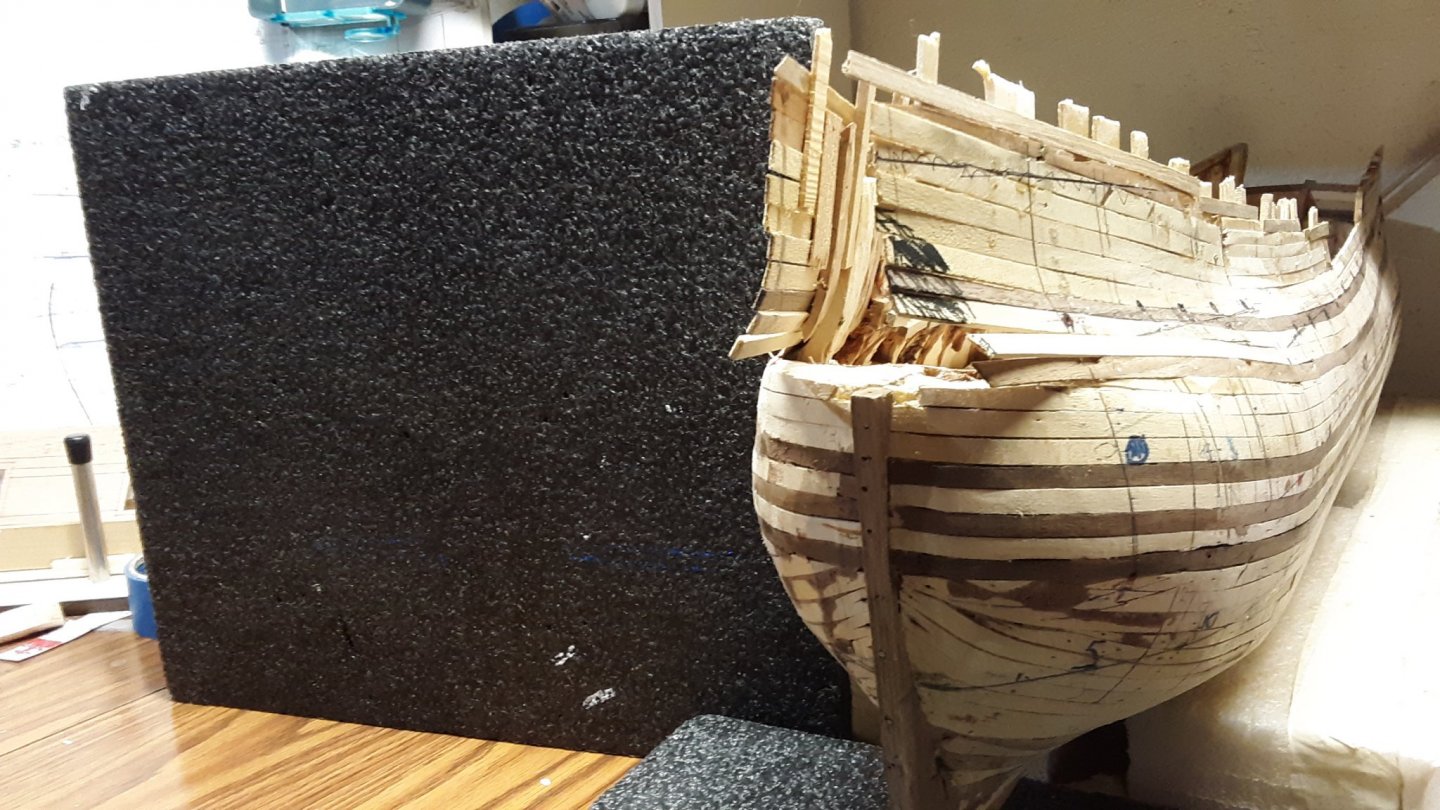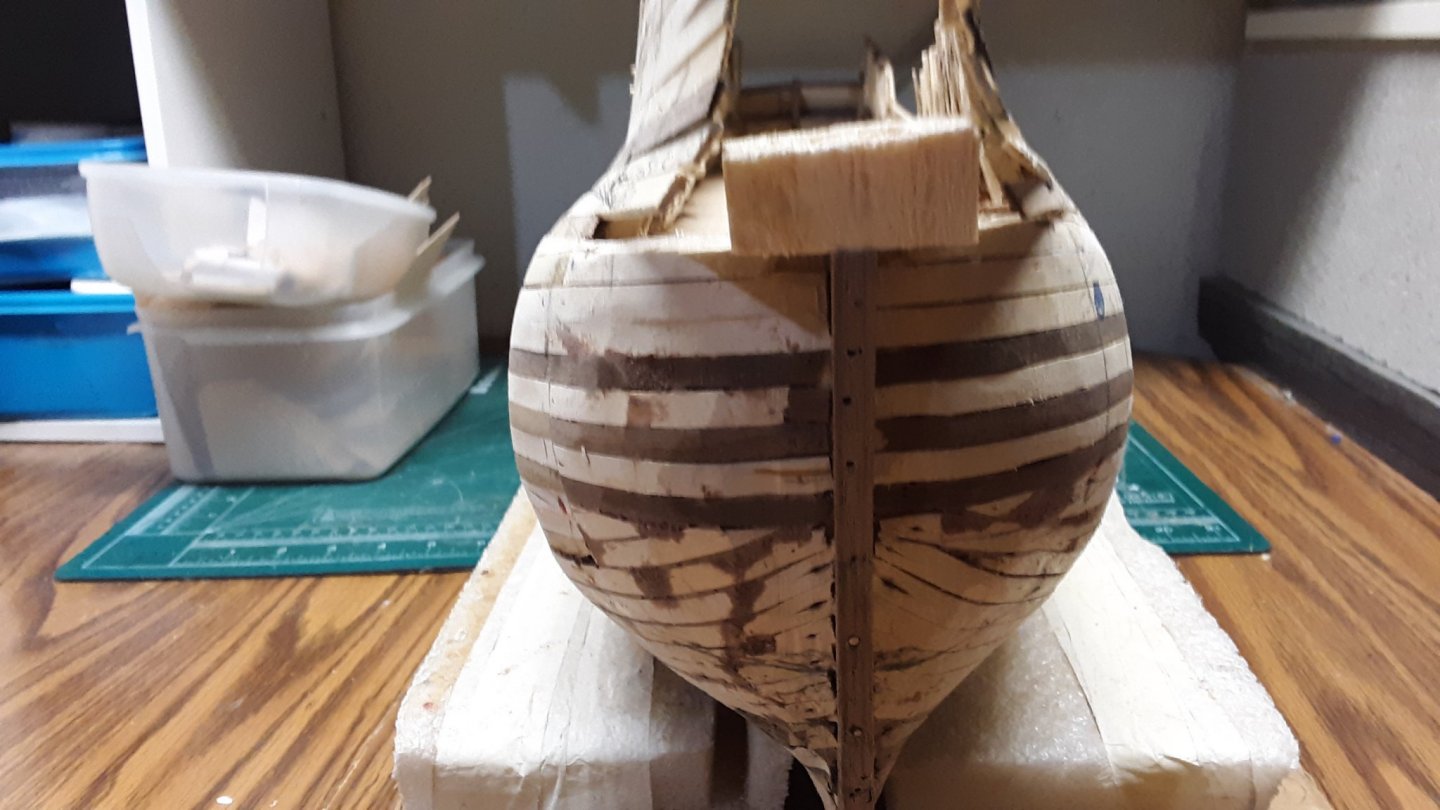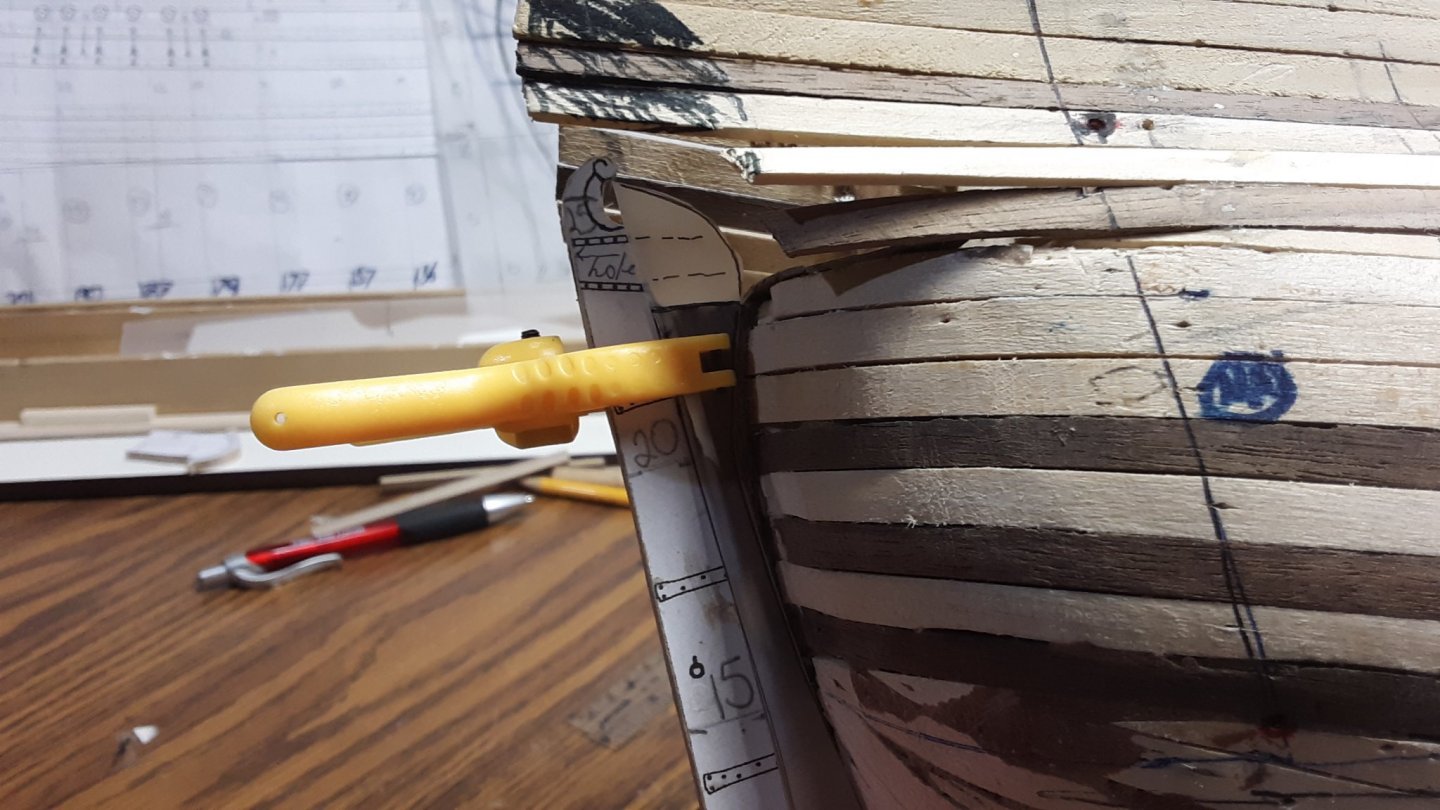-
Posts
1,735 -
Joined
-
Last visited
Content Type
Profiles
Forums
Gallery
Events
Everything posted by flying_dutchman2
-
Working on the bow area. Building it up and figuring out how to anchor the bowsprite in that area. For me, this ship is difficult to built. It is the ultimate challenge for me and I will finish her. As I said before maybe I should have built something easier before doing the fluit. Anyway, the steps I follow in my head from keel to flags is at times a bit overwhelming. Like the Dutch shipwright who didn't write anything down while building a ship, it was all in his head. I am doing something similar, I am not taking any notes like some modelers do. Marcus
- 332 replies
-
- fluit
- abel tasman
-
(and 1 more)
Tagged with:
-
CBX 1050 and a GSX 1150 wow, I remember those very well. In college (no money for a car) started with a 1981 Honda XL250S, moved up to a 1983 XL600 and that was a kickstart. Had that till 1988 when I finished grad school. Went to work in Saudi Arabia and had several Huskies. No spark arrestor, short exhaust and go all out on sand flats with others. Always wore a helmet. Marcus
-
Too many guns on that drawing. Someone had a dream and put it on paper. The average amount of sailors on a Fluit was around 20 and usually they all came from the same town. Narrow decks were for less toll. Some fluits had 6 to 8 canons, most had only a few. They sailed in convoys and were protected by war ships. I would not place those canons where they are now. There must be other places on the decks where you can put them without interference from the grate. Marcus
-
Observation. My Zeehaen needs 4 - 20 cm planks to cover one strake from stem to stern. If you plank with straight butts, top ruler, then 4 planks of 20cm long would cover 1 strake. If you plank with with Dutch version of butts, bottom ruler, then 4 planks will not cover 1 strake. You need more. That would be 4 - 1/2 planks. If a plank is 20 cm long and your Dutch butts are 2.5 cm each end, the full width of the plank is less then 20 cm long Now if the plank is 20 cm long and the 2 butts are 2.5 cm long then 2 x 2.5 + 20 = 25 cm long plank. This is wrong. Below I made various templates to form the butts. Top right a rectangular piece of brass of 2.5 cm long and two 90 degree edges on each end. Will need to sharpen one long edge so it is easier to cut the wood. Top left razor blade cut from 4 cm to 2.5 cm. On the hull I would overlap 2 pieces and make the cut so the butts would fit well. Bottom ruler just shows how the butts fit. Non of my models have all the same looking butts. I tried several kinds. On the fluit I will do all Dutch versions of butts Is there another word for the butts? Marcus
- 332 replies
-
- fluit
- abel tasman
-
(and 1 more)
Tagged with:
-
I built only Dutch ships and they are known to have bluff bows. Presently building a Fluit. Towards the stern the wood bends both ways. All I use is water and when I really have trouble, heat, but that is rare. I soak the heck out of them, sometimes for weeks. But this is my method and we all have different methods. Whatever works. Marcus
-
Roger, Wind powered sawmills was a Dutch invention and you are correct about the wood. The Dutch had special fluits called "Houthaalders" which means wood haulers and they went to the Baltic to get wood. The taffrail could be opened and wood would be slipped in. Marcus
- 332 replies
-
- fluit
- abel tasman
-
(and 1 more)
Tagged with:
-
Yes, Clear. Thank you for all of that. 😁 Marcus
- 332 replies
-
- fluit
- abel tasman
-
(and 1 more)
Tagged with:
-
Ab, Been reading about Dutch measurements on Wikipedia https://en.m.wikipedia.org/wiki/Dutch_units_of_measurement#Voet and have two questions. In post #186 you said and I quote "He specifies the planking needed as 4 1/2 for every strake for this length. That means that every plank is about 27 feet, which is roughly 7,50 m." 1. 4 1/2 what? 2. What formula did you use to get 7,50 meter from 27 feet? Thank you Marcus
- 332 replies
-
- fluit
- abel tasman
-
(and 1 more)
Tagged with:
-
Gentlemen, Ammonia is a Big NO-NO in making planks bendable. Technical background. Wood is made up of cells that have lignin, which is a complex organic polymer deposited in the cell walls of many plants, making them rigid and woody. Ammonia reacts with the lignin by making the cell walls mushy. It destroys the cell walls of the wood and over time warps the model. Your plank falls apart. Just think of what happens to all the planks of your model. Marcus
-
Robert, Here is a link https://www.modelships.de/Fluyt-Zeehaen/Fluyt-Zeehaen.htm from a site of models made by professionals. The link shows the Zeehaen (which I am building) . If you have any questions, I might be able to answer those. On a Dutch site modelbouwforum.nl there are several modelers that have built fluits. Look under the thread called "Bouwverslagen historische schepen" Marcus
-
Ab, I will look in Witsen's book and thank you for the suggested numbers. I am a bit embarrassed by the next question (and I should not be), What is the length of my planks in centimeters or inches for my model if the scale is 1:37.5? Do I divide 37.5 into something? Thanks Marcus Mark, Thank you as well for the measurements. Marcus
- 332 replies
-
- fluit
- abel tasman
-
(and 1 more)
Tagged with:
-
Peter, Your English is fine not to worry. I am doing the butts on every plank. I practiced making these butts while building the Utrecht and the Boyer. Marcus
- 332 replies
-
- fluit
- abel tasman
-
(and 1 more)
Tagged with:
-
The following question has probably been asked numerous times. If my ship is in X scale what is the max legth and width of my hull and deck planks? I have looked in numerous books i possess, went to several ship model sites and read several articles. There is not a clear cut answer or math formula available. In "Planking techniques for model ship builders" by "Donald Dressel" on pages 70 to 81 there is a discussion about some basic information. Example. On an 1/8th inch scale model planks should not exceed 3 inches. On a 1/4 inch scale model the planks are 6 inches in length. Also in general planks were between 4.6 mtr to 6.1 mtr (15' to 20') in real life. So if my model is in a scale of 1 cm - 37.5 cm, what will the length of my planks be for the model? Thank you in advance. Marcus
- 332 replies
-
- fluit
- abel tasman
-
(and 1 more)
Tagged with:
-
Thanks for the help, Ab. Will make the opening a bit rounder and have started on the carvings. It is the one exercise I am not very good at. So I make many of the same items and pick the best. I have 9 samples of the fish. Marcus
- 332 replies
-
- fluit
- abel tasman
-
(and 1 more)
Tagged with:
-
Taffrail onstled and excess planking removed. Taffrail from the inside. Rudder dry fitted with tape. Dry fit rudder and tiller. Marcus
- 332 replies
-
- fluit
- abel tasman
-
(and 1 more)
Tagged with:
-
Did what Ab mentioned in his post #174. First I dry fitted the taffrail to the batten that is screwed to the post. Glued the taffrail in place. After glue is dry remove the batten holding the taffrail and the excess of the planks sticking out backwards. Marcus
- 332 replies
-
- fluit
- abel tasman
-
(and 1 more)
Tagged with:
-
Yes, I do. Also on a Dutch forum someone build the Zeehaen as well as the site ShipsofScale. Marcus
- 332 replies
-
- fluit
- abel tasman
-
(and 1 more)
Tagged with:
-
Thanks, Ab. Once the taffrail is installed, I need to cut out a round area just below the taffrail. I think that once the taffrail is in then that should be easy to do. Just follow the curve of the carvings tbat will be installed at that location. Marcus
- 332 replies
-
- fluit
- abel tasman
-
(and 1 more)
Tagged with:
-
Yes, she turned out pretty nice. My sister and brother in law love the build and she is proudly displayed on a side table in the living room. Marcus
- 332 replies
-
- fluit
- abel tasman
-
(and 1 more)
Tagged with:
-
- 332 replies
-
- fluit
- abel tasman
-
(and 1 more)
Tagged with:
-
I am stuck. I have difficulty visualizing the transom/stern area (maybe it's me). I do have help from a Dutchman on modelbouwforum.nl who has built the Zeehaen in a smaller scale and his looks really good. I'll just go back to his build and stare at his pictures from the stetn area 😀 Marcus
- 332 replies
-
- fluit
- abel tasman
-
(and 1 more)
Tagged with:
About us
Modelshipworld - Advancing Ship Modeling through Research
SSL Secured
Your security is important for us so this Website is SSL-Secured
NRG Mailing Address
Nautical Research Guild
237 South Lincoln Street
Westmont IL, 60559-1917
Model Ship World ® and the MSW logo are Registered Trademarks, and belong to the Nautical Research Guild (United States Patent and Trademark Office: No. 6,929,264 & No. 6,929,274, registered Dec. 20, 2022)
Helpful Links
About the NRG
If you enjoy building ship models that are historically accurate as well as beautiful, then The Nautical Research Guild (NRG) is just right for you.
The Guild is a non-profit educational organization whose mission is to “Advance Ship Modeling Through Research”. We provide support to our members in their efforts to raise the quality of their model ships.
The Nautical Research Guild has published our world-renowned quarterly magazine, The Nautical Research Journal, since 1955. The pages of the Journal are full of articles by accomplished ship modelers who show you how they create those exquisite details on their models, and by maritime historians who show you the correct details to build. The Journal is available in both print and digital editions. Go to the NRG web site (www.thenrg.org) to download a complimentary digital copy of the Journal. The NRG also publishes plan sets, books and compilations of back issues of the Journal and the former Ships in Scale and Model Ship Builder magazines.




